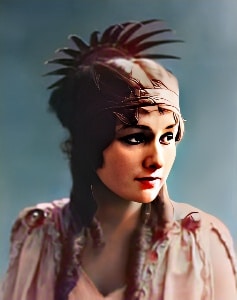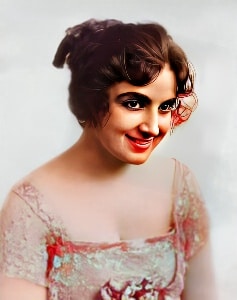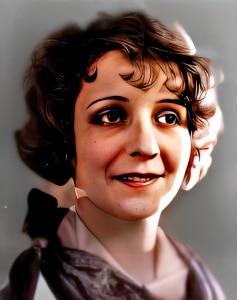 Lidia Quaranta, whose full name was Lidia Quaranta Liguori, was an Italian actress who made significant contributions to the world of silent film during the early 20th century.
Lidia Quaranta, whose full name was Lidia Quaranta Liguori, was an Italian actress who made significant contributions to the world of silent film during the early 20th century.
Born on November 19, 1891, in Naples, Italy, she became a prominent figure in the Italian film industry and later worked in Hollywood. Her career spanned the silent film era and transitioned into the early days of sound cinema.
Quaranta’s journey into the world of cinema began in Italy, where she made her film debut in the silent era. She quickly gained recognition for her talent as an actress and became a sought-after performer in Italian cinema. Her early roles included appearances in Italian films like “Cavalleria rusticana” (1913), an adaptation of Pietro Mascagni’s opera, and “La locandiera” (1913), directed by Augusto Genina.
Quaranta’s career reached new heights when she joined the Italian production company Ambrosio Film. It was during this period that she achieved international fame for her role as the lead character in “ Cabiria” (1914), a landmark epic film directed by Giovanni Pastrone. “ Cabiria” was known for its grand scale, impressive set designs, and innovative storytelling. The film’s success and Lidia Quaranta’s performance played a significant role in establishing her as a prominent actress in the Italian film industry.
In 1916, Quaranta made her way to the United States, where she continued to pursue her acting career. She was part of the wave of European actors and filmmakers who emigrated to Hollywood during the silent film era. Her American film debut came with “The Scarlet Oath” (1916), and she subsequently appeared in films such as “The Heart of a Hero” (1916) and “Hands Up!” (1917).
While her Hollywood career was relatively short-lived, Lidia Quaranta’s contributions to American silent cinema were notable. Her experience and talent added to the diversity of actors in the burgeoning Hollywood film industry.
Quaranta’s transition from Italian cinema to Hollywood was part of a larger trend of internationalization in the silent film era. Actors and filmmakers from various countries found opportunities in Hollywood, contributing to the richness and diversity of American cinema during this period.
Lidia Quaranta’s career, like many silent film stars, experienced a decline with the advent of sound in cinema. The transition to talking pictures posed challenges for many actors, including those with successful careers in silent films. Her last known film role was in “L’ultima avventura” (1932), which marked the end of her acting career.
Despite the limited information available about her life and career, Lidia Quaranta remains an important figure in the history of early cinema. Her work in iconic films like “ Cabiria” and her international journey from Italy to Hollywood highlight the global nature of silent film and the impact of talented performers like her in shaping the early film industry. Her legacy as an actress of the silent era continues to be remembered and appreciated by film historians and enthusiasts.

 Lidia Quaranta, whose full name was Lidia Quaranta Liguori, was an Italian actress who made significant contributions to the world of silent film during the early 20th century.
Lidia Quaranta, whose full name was Lidia Quaranta Liguori, was an Italian actress who made significant contributions to the world of silent film during the early 20th century.


